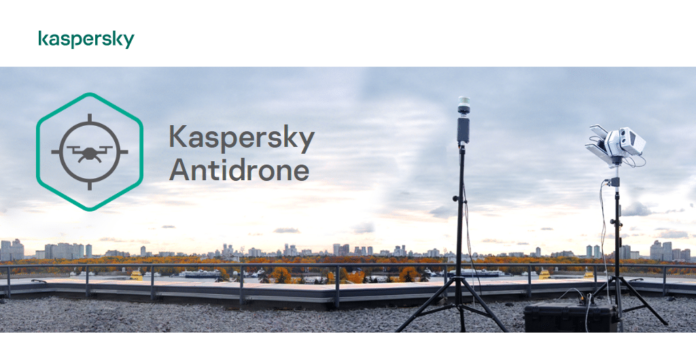Kaspersky has launched a new solution, Kaspersky Antidrone, designed to help organizations and property owners defend against the unauthorized trespassing by civilian drones. Through an exceptional combination of sensors and machine learning technologies, Kaspersky Antidrone can automatically spot, identify and prohibit unmanned aircrafts from entering restricted areas without damaging the device.
The global drone market is expected to reach $43 billion by 2024 and is driven by the potential opportunities and positive changes that the use of unmanned aerial vehicles can bring. However, the mass adoption of this technology could be affected by the negative connotations often associated with drones. A recent study in UK found that only 31% of respondents admitted having a positive attitude towards them, largely driven by cases of improper or illegal use of unmanned aircrafts. Drones can be leveraged for spying purposes, injure people through crashing, cause damage to critical infrastructure including nuclear power stations, or even disrupt normal operations of an airport.
For these reasons, it is important to build and maintain trust in drone technology and safeguard its role as a key innovation for businesses and individuals by ensuring that they will not pose a risk to privacy and safety. Kaspersky’s antidrone solution make the use of unmanned aircraft systems safer, reduces risks and increases operator responsibility.
Kaspersky Antidrone software coordinates the work of several hardware modules provided by partners and distinguishes drones from other objects. Depending on the customers’ needs and environment, the primary detection module searches for drones using video cameras combined with radar, LIDAR and audio sensors. Using a laser scanner to determine the position of the drone is the first of its kind in the field and unique to only Kaspersky’s solution.
When a moving object is detected in the sky, its coordinates are transmitted to a dedicated server which then sends them to a special unit. In accordance with data from the primary detection module, this unit rotates towards the object, tracks it and the camera zooms in on it. At the same time, a neural network, trained to identify drones among other moving items, analyzes the object on the video. If it is distinguished as a drone, the server sends the command to the dedicated module to jam the communication between the device and its controller. As a result, the drone either flies back to where it took off from or lands in the location where it lost signal with the controller. This means that the device will not be damaged, as there is no physical contact or attack towards the drone.
Vladimir Turov of Kaspersky Antidrone mentioned that many members of Kaspersky Antidrone team, himself included, have long been drone pilots, unmanned aircrafts can sometimes pose real danger. He said he witnessed some risky situations during public events. It clearly causes some doubt around the use of the technology. Unfortunately, as a drone pilot, you often don’t know which locations are prohibited, so when your drone is unexpectedly crushed or physically attacked with hostile protection measures, it is very frustrating. That’s why, during the development of their product, they took the interests of drone enthusiasts as well as safety requirements and concerns into account. This helped them develop a way to ensure drones do not enter prohibited areas, without damaging them.”















